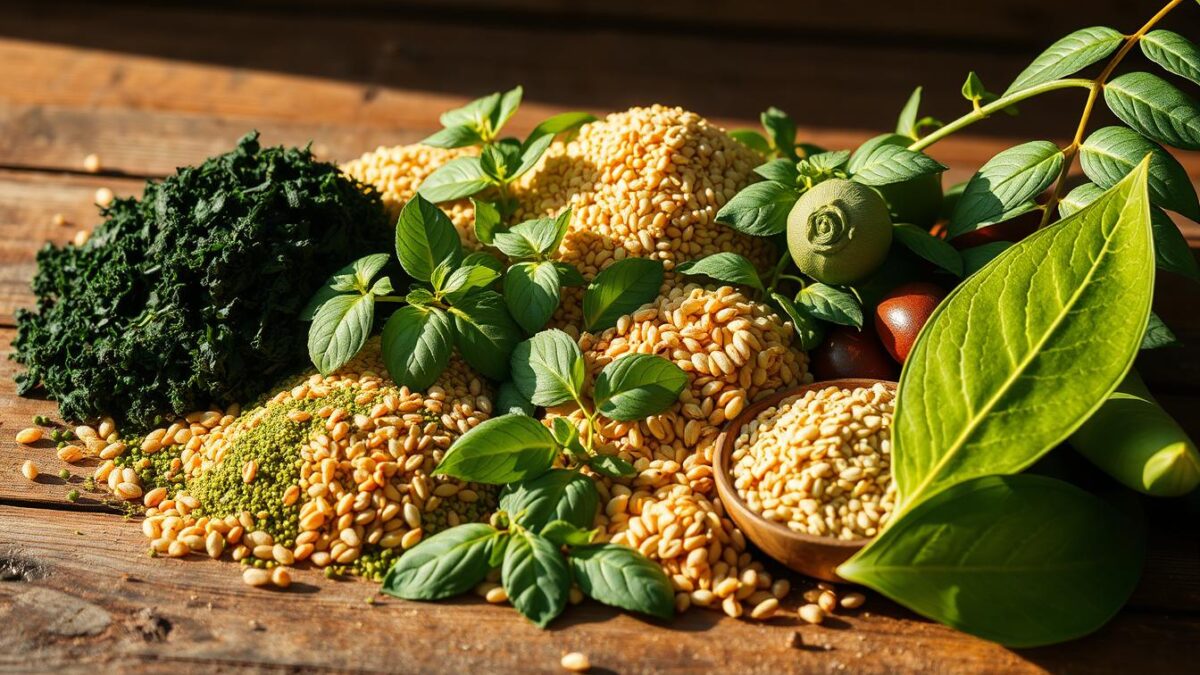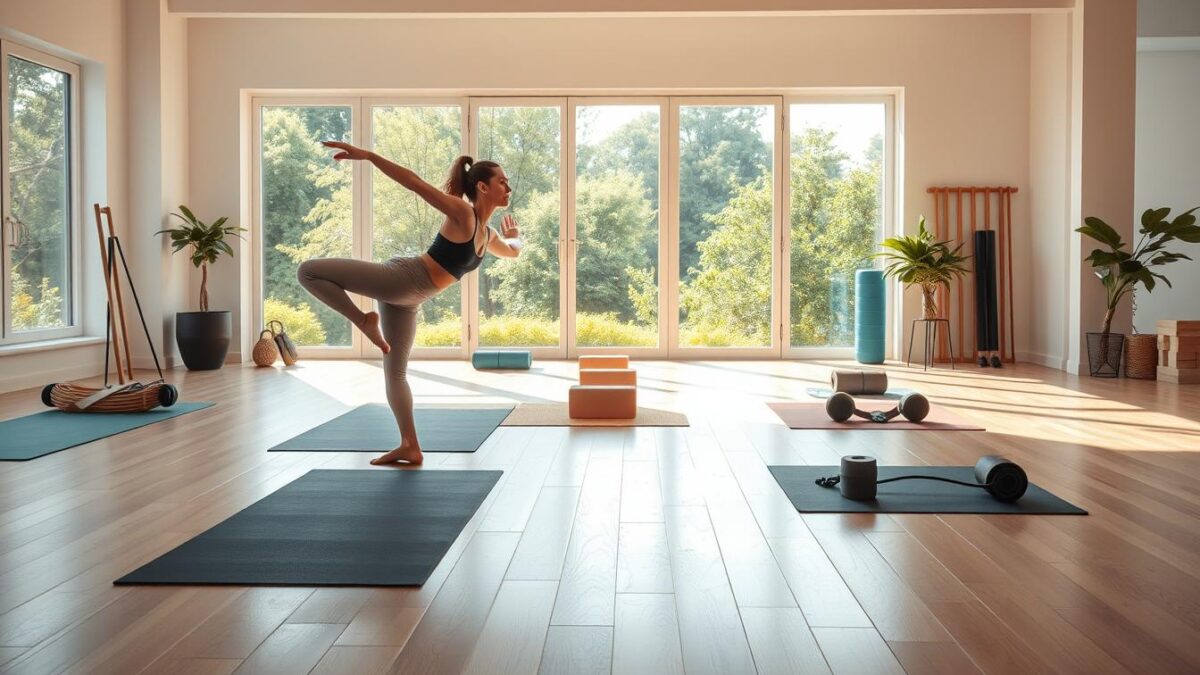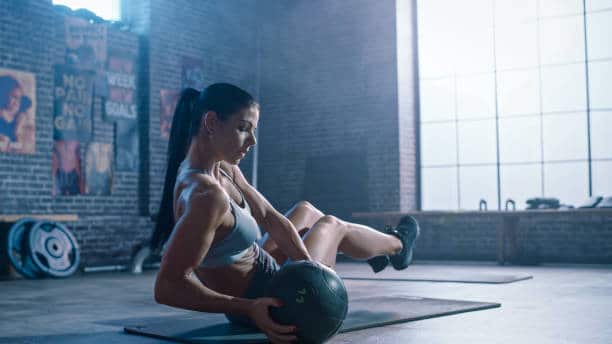
Calisthenics vs Pilates: Which is Right for You?
Did you know that nearly 30% of people who start new workout routines give up within the first six months? With so many fitness options available, it’s easy to feel overwhelmed. But don’t worry—I’m here to help you cut through the confusion on calisthenics vs Pilates, which is the better choice for you.
First, think about what you want to achieve with your workouts. Are you looking to build muscle tone, enhance your agility, or make smarter choices that support overall health? Both calisthenics and Pilates have their unique benefits, and understanding these can be crucial to sticking with your fitness plan.
In this guide, we’ll explore the origins, core principles, and common exercises of both calisthenics and Pilates. By the end, you’ll have a clearer picture of which workout approach aligns with your current fitness level and long-term goals.
So, let’s dive in and discover whether bodyweight training with callisthenics or precision-focused Pilates will lead you to a healthier, more active lifestyle!
Understanding Calisthenics: What is it?
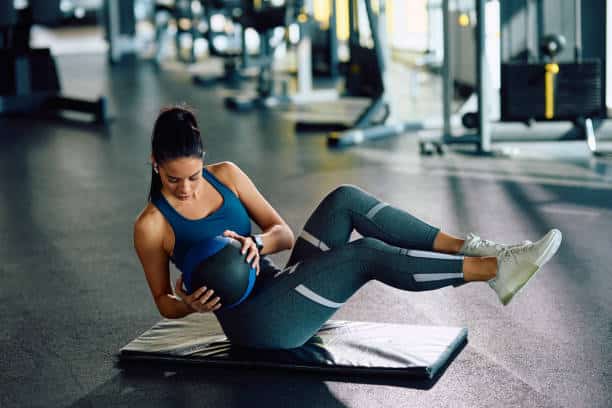
Bodyweight exercises are used in calisthenics, an exercise style that increases strength, flexibility, and endurance. Because of its ease of use and efficiency, it’s frequently seen as a crucial component of the evolution of fitness.
A Brief History of Calisthenics
The history of calisthenics begins in ancient Greece. Athletes and soldiers have historically utilized these exercises to get ready for physical challenges. Calisthenics has changed over the ages, but it is still an essential component of fitness regimens all around the world. Its appeal lies in its simplicity, requiring little to no equipment, making it accessible to people of all fitness levels. Today, this form of exercise has seen a resurgence, with many embracing it for its ability to build strength, flexibility, and endurance. For newcomers, understanding beginner calisthenics workout tips can ensure a safe and effective start to their fitness journey.
Key Principles of Calisthenics
Basic motions and increasing resistance are the main focuses of calisthenics. It all comes down to using one’s own body weight to improve fitness and gain muscle. Exercises are made to be functional, imitating the kinds of motions we do on a regular basis.
Common Exercises in Calisthenics
Calisthenics includes a variety of exercises that engage multiple muscle groups. Some of the most common ones are:
- Pull-ups: A powerful compound movement that targets the back, shoulders, and arms.
- Push-ups: This exercise works on the chest, shoulders, triceps, and core.
- Squats: Essential for building lower body strength, focusing on quads, hamstrings, and glutes.
As you gradually increase the number of repetitions and intensity, these exercises are a perfect example of progressive resistance training. You can use these basic movements to improve your overall strength and endurance with regular practice.
The following table lists several popular calisthenics exercises along with the muscle groups they work:
| Exercise | Targeted Muscle Groups |
|---|---|
| Pull-ups | Back, Shoulders, Arms |
| Push-ups | Chest, Shoulders, Triceps, Core |
| Squats | Quads, Hamstrings, Glutes |
| Planks | Core, Shoulders |
| Dips | Chest, Triceps, Shoulders |
Exploring Pilates: An Overview
Knowing the foundation of Pilates is crucial while discussing it. This early 20th-century fitness program highlights the mind-body link and uses regulated motions to improve general health.
The Origins of Pilates
In the early 1900s, at a time of war, Joseph Pilates, a visionary in the fitness industry, established Pilates. He created it as a thorough workout program to enhance both mental and physical conditioning. His approach, which was first known as “Contrology,” aimed to synchronize the mind and body through methodical, targeted exercises.
Core Principles of Pilates
Pilates revolves around several guiding principles crucial for achieving optimal results:
- Breath Control: Coordinated breathing enhances the exercises and supports the movements.
- Precision: Precise movements ensure maximum efficiency and effectiveness.
- Centering: Focus on the body’s core – the powerhouse – to maintain balance and control.
- Concentration: Mental focus increases the benefits of physical exertion.
- Flow: Fluid motions that mimic the body’s natural movements.
Each principle underscores the importance of a harmonized mind-body connection in a Pilates practice.
Typical Pilates Exercises
Common exercises in Pilates consist of the hundred, roll-up, and teaser. Here’s a closer look:
- The Hundred: This exercise warms up the body and increases circulation by engaging the core with rhythmic breathing and controlled movements.
- Roll-Up: Improves flexibility and strength in the spinal muscles while focusing on controlled spinal articulation.
- Teaser: A challenging core exercise that demands precision, balance, and abdominal control.
Through these exercises, a practitioner can develop core strength, proper alignment, and overall muscle balance, solidifying the essence of Joseph Pilates’ vision for a balanced, efficient exercise regime.
Calisthenics vs Pilates: Key Differences
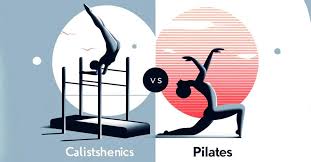
When comparing calisthenics and Pilates, several distinct differences come to light. Calisthenics is all about building raw strength and power through dynamic bodyweight exercises. It uses your body weight as resistance, making it an effective method for developing functional strength. In contrast, Pilates emphasizes control and precision, focusing on smooth, controlled movements rather than sheer power.
One major difference is in the equipment used. Calisthenics generally requires little to no equipment—think pull-up bars, parallel bars, or even just the floor. It’s all about leveraging your own body weight. Pilates, on the other hand, often involves specialized equipment such as reformers, resistance bands, and stability balls. These tools help enhance the quality and control of your movements.
Another key aspect is the intensity and pace of the workouts. Calisthenics workouts can be intense and fast-paced, pushing your endurance and agility to their limits. Pilates sessions tend to be more moderate, focusing on controlled, fluid movements that improve overall body conditioning and core strength.
The impact on agility and movement quality also varies. Calisthenics boosts total body coordination and accelerates muscle growth through high-intensity exercises. Pilates, however, emphasizes core stability and flexibility, leading to better posture and refined movement quality. Here’s a quick comparison of the key differences:
| Aspect | Calisthenics | Pilates |
|---|---|---|
| Emphasis | Strength and Power | Precision and Control |
| Equipment | Minimal to None | Varied Apparatuses |
| Pace | High Intensity | Moderate and Controlled |
| Impact | Agility and Coordination | Core Stability and Flexibility |
Benefits of Calisthenics
Calisthenics is a comprehensive training plan that caters to people looking for a multitude of benefits. Let’s explore the main benefits that make this type of training so alluring.
Strength Building
One of the primary benefits of calisthenics is its productive capacity to enhance strength. By exercising your complete body, you can improve muscle endurance and gain lean muscle mass. Workouts that work for many muscle groups, like push-ups, pull-ups, and squats, strengthen the complete body.
Flexibility and Mobility
Calisthenics isn’t just about strength; it’s also great for improving flexibility and mobility. Functional movements within callisthenics promote a better range of motion, which is crucial for daily activities. Exercises that incorporate stretching and dynamic motions help maintain joint health and prevent injuries.
Accessibility and Cost
The accessibility of calisthenics is one of its best qualities. It’s a free workout that needs little to no equipment, so it’s a great choice for people who don’t want to spend money on pricey gear or gym memberships. These exercises can be done in almost any place: at home, in a park, or a tiny apartment.
Benefits of Pilates
Practising Pilates offers a host of benefits that can significantly boost your overall well-being. One of the main advantages is its ability to activate deep muscles, particularly those in the core. This not only strengthens your core but also improves your posture, which can help alleviate and prevent back pain.
Another key benefit of Pilates is its low-impact nature. This makes it an ideal choice for those looking to enhance their fitness without putting undue stress on their joints. It’s especially useful for individuals recovering from injuries, as Pilates provides a safe, gradual way to regain strength and flexibility while staying active.
Beyond physical health, Pilates also supports mental well-being. The practice emphasizes breath control and mindful movement, which enhances your mental focus and reduces stress. By fostering a strong mind-body connection, Pilates helps promote a sense of calm and improves overall mental clarity.
| Benefit | Description |
|---|---|
| Deep Muscle Activation | Strengthens core muscles and supports improved posture. |
| Improved Posture | Encourages proper alignment of the body, preventing back pain. |
| Low-Impact Workout | Ideal for joint health and minimizing stress on the body. |
| Rehabilitation Exercises | Safe and effective methods for injury recovery. |
| Mental Well-being | Enhances concentration and reduces stress through mindful practice. |
How to Choose Between Calisthenics and Pilates
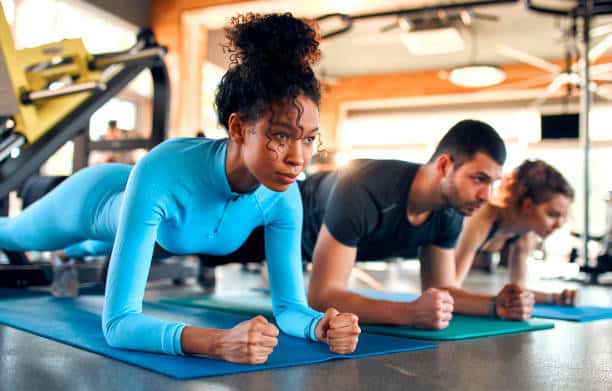
It’s critical to have a clear idea of your fitness and health goals before choosing between Pilates and calisthenics. Do you want to increase your muscle mass, improve your range of motion, or heal an injury? You might decide to do one kind of exercise over another depending on each of these objectives.
Assessing Your Fitness Goals
If your main goal is to gain more strength and muscle, calisthenics may be a better fit. This type of workout challenges and builds muscle by using your body weight to complete exercises. Conversely, Pilates can be the best option if you want to improve your core strength, flexibility, and coordination.
It’s also critical to think about creating a customized exercise program that fits your health goals. You may make sure that the exercises you choose contribute to long-lasting fitness habits by customizing your fitness regimen.
Considering Your Lifestyle
Choosing between Pilates and calisthenics depends a lot on your lifestyle. Consider how well you manage your schedule and how much time you can commit to exercising each week. Calisthenics is a versatile alternative for people with hectic schedules because it usually requires little equipment and can be done at home or in a park.
Although Pilates can be practiced at home, access to a studio or specialized equipment may be necessary. Pilates courses may be more interesting and motivating for you if you like supervised exercise or group environments. This decision ultimately comes down to selecting a workout space that complements your tastes and helps you on your fitness path.
| Consideration | Calisthenics | Pilates |
|---|---|---|
| Fitness Goals | Muscle Building, Strength | Flexibility, Core Strength |
| Equipment | Minimal Equipment | Special Equipment/Studio |
| Workout Setting | Home, Park | Home, Studio Classes |
| Time Management | Flexible | Scheduled Classes |
| Preferred Environment | Solo | Group or Solo |
Incorporating Both into Your Routine
Integrating calisthenics and Pilates into your fitness routine can offer a powerhouse of benefits, creating a balanced and effective workout plan. By combining the strength and endurance gains from calisthenics with the flexibility and control of Pilates, you can build a well-rounded fitness strategy that delivers comprehensive results.
If you’re eager to incorporate both, consider setting up a schedule that alternates between the two. For instance, you might focus on calisthenics on Mondays, Wednesdays, and Fridays while dedicating Tuesdays and Thursdays to Pilates. This way, you’ll enjoy the muscle-building benefits of calisthenics and the core-strengthening and posture-enhancing effects of Pilates.
Another effective approach is to blend both practices within a single workout session. Start with a dynamic calisthenics warm-up, such as jumping jacks or push-ups, to get your heart rate up. Then, transition into Pilates exercises like the Hundred or Leg Circles. This combination ensures you’re targeting various muscle groups and training your body in diverse ways.
Remember, creating a balanced exercise routine isn’t about sticking rigidly to one method. Experiment with integrating calisthenics and Pilates into your weekly schedule. By cross-training with these two methods, you’ll develop a stronger, more flexible body and enhance your overall physical fitness.


